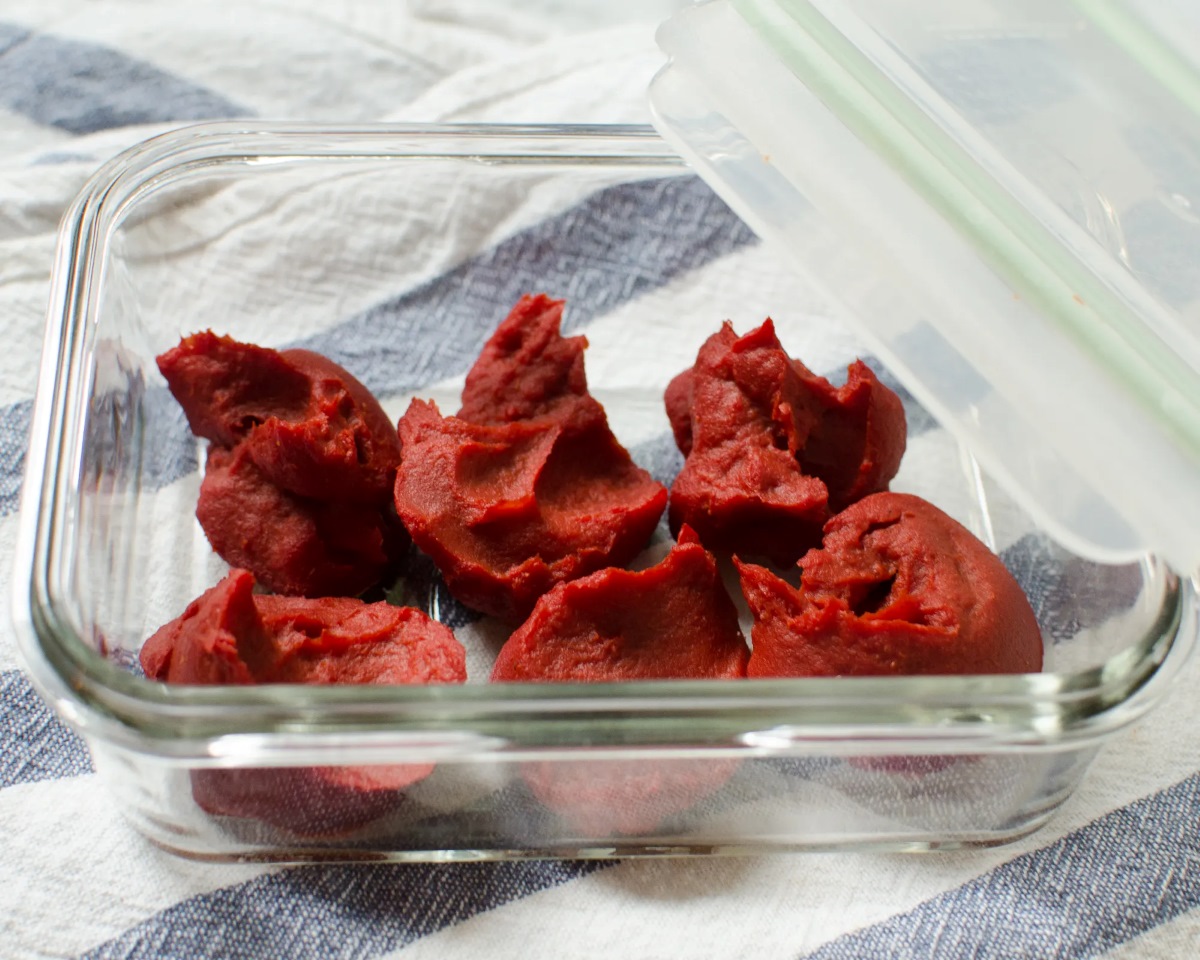

Articles
How To Store Extra Tomato Paste
Modified: January 6, 2024
Learn effective tips and tricks for storing extra tomato paste in this informative article. Discover the best methods to keep your tomato paste fresh and ready to use when you need it.
(Many of the links in this article redirect to a specific reviewed product. Your purchase of these products through affiliate links helps to generate commission for Storables.com, at no extra cost. Learn more)
Introduction
Tomato paste is a staple ingredient in many kitchens, adding depth of flavor and richness to a wide range of dishes. Whether you’re using it as a base for soups and sauces or as a flavor-enhancing agent in marinades and dressings, having tomato paste on hand can be a game-changer in your cooking endeavors.
However, most recipes call for only a small amount of tomato paste, leaving you with a nearly full can or tube of the condiment. If not properly stored, tomato paste can quickly lose its vibrant color, flavor, and texture, rendering it unusable and ultimately leading to a waste of food and money.
That’s why it’s important to know how to store extra tomato paste to extend its shelf life and maintain its quality for future use. In this article, we will explore various methods for storing tomato paste, ensuring that you can enjoy its amazing flavor and versatility for weeks to come.
Whether you prefer the convenience of freezing, the long-term preservation of canning, or the simplicity of storing in jars, there’s a method that’s right for you. We’ll also delve into the option of using ice cube trays to portion and freeze tomato paste, as well as the process of dehydrating tomato paste for longer-term storage.
By following these tips and techniques, you can prevent unnecessary waste and always have tomato paste readily available whenever a recipe calls for it. Let’s dive into the wonderful world of tomato paste storage!
Key Takeaways:
- Properly storing extra tomato paste is crucial to preserve its freshness, flavor, and quality for future use. Freezing, canning, using ice cube trays, or dehydrating offer unique solutions to meet your storage needs.
- Whether you prefer convenience, long-term preservation, portion control, or versatility, there’s a method for storing tomato paste that suits your culinary needs. By following these storage tips, you can enjoy the rich flavors of tomato paste while minimizing waste and saving money.
Read more: How To Store Tomato Paste
Importance of Storing Tomato Paste
Properly storing tomato paste is crucial for preserving its freshness, flavor, and nutritional value. Here are some key reasons why it’s important to store tomato paste correctly:
- Preserving Quality: Tomato paste is made by cooking down ripe and flavorful tomatoes into a concentrated form. It contains natural sugars and acids that give it its unique taste. However, when exposed to air and moisture, tomato paste can easily spoil, leading to changes in taste, texture, and color. By storing it properly, you can ensure that the intense and rich flavors of tomato paste are preserved.
- Preventing Waste: Many recipes call for only a small amount of tomato paste, leaving you with leftover portions. Without proper storage, this excess paste can quickly spoil, resulting in food waste. By storing tomato paste correctly, you can use it in future recipes, preventing unnecessary waste and saving money.
- Convenience in Cooking: Having stored tomato paste readily available in your kitchen can significantly streamline your cooking process. Instead of opening a new can or tube every time a recipe requires tomato paste, you can simply grab some from your stored supply, saving time and effort in preparing meals.
By understanding the importance of storing tomato paste, you can make the most out of this versatile ingredient while minimizing waste and ensuring the best quality in your culinary creations.
Tips for Storing Tomato Paste
When it comes to storing tomato paste, there are several tips and techniques you can follow to keep it fresh and flavorful. Here are some top tips for storing tomato paste:
- Airtight Containers: When storing tomato paste, it’s essential to use airtight containers to prevent air and moisture from getting in. This will help maintain its vibrant color, taste, and texture. Consider using glass jars or containers with tight-fitting lids.
- Refrigeration: Tomato paste can be stored in the refrigerator for short-term use. Once opened, transfer any unused tomato paste from its original packaging into a clean, airtight container, and refrigerate promptly. It can usually stay fresh for up to 7-10 days in the refrigerator.
- Freezing: Freezing tomato paste is an excellent option for long-term storage. You can portion out the tomato paste into ice cube trays or small freezer-safe containers, freeze them until solid, and then transfer them to a freezer bag. This allows you to easily grab the required amount of tomato paste whenever needed.
- Canning: Canning tomato paste is another option for preserving it for an extended period. Follow proper canning procedures and guidelines to ensure safe and effective preservation.
- Labeling: When storing tomato paste, label the containers with the date of storage. This way, you can keep track of its freshness and use it in a timely manner.
- Keep Away from Light and Heat: Exposure to light and heat can accelerate the deterioration of tomato paste. Store it in a cool, dark place, away from direct sunlight and heat sources such as stovetops or ovens.
- Frequent Stirring and Sealing: If you’re using larger containers for storing tomato paste, it’s important to periodically stir the paste to prevent discoloration or separation. Ensure that the container is tightly sealed after each use.
- Drying: If you want to create tomato paste flakes or powder for extended shelf life, consider dehydrating tomato paste. Spread a thin layer of tomato paste on a parchment-lined baking sheet and dry it in a low-temperature oven. Once completely dried, grind it into flakes or powder and store it in an airtight container.
By following these tips, you can extend the shelf life of tomato paste and always have it on hand for your culinary adventures. Whether you choose to refrigerate, freeze, can, or dehydrate it, these methods ensure that your tomato paste remains delicious and usable for an extended period.
Method 1: Freezing Tomato Paste
Freezing tomato paste is a simple and convenient method for storing it for an extended period. By portioning it out into smaller quantities, you can easily thaw and use the required amount whenever needed. Here’s how to freeze tomato paste:
- Portioning: Start by measuring the desired quantity of tomato paste to freeze. It’s a good idea to portion it out into convenient measurements, such as tablespoons or cubes, for easy usage in future recipes.
- Ice Cube Trays: If you prefer using ice cube trays, fill each compartment with tomato paste, leaving a small space at the top to allow for expansion during freezing.
- Freezer-Safe Containers: Alternatively, you can use small freezer-safe containers or plastic bags to store the tomato paste. Ensure that the containers are airtight and suitable for freezing.
- Labeling: Once the tomato paste is portioned and packed, label each container or bag with the date and quantity of tomato paste inside. This will help you keep track of the freshness and measure the portions accurately.
- Freezing: Place the ice cube trays or containers in the freezer, ensuring they are kept flat and level. Allow ample space between them so the cold air can circulate freely.
- Thawing: When you need to use the frozen tomato paste, simply take out the required portion and thaw it in the refrigerator overnight or defrost it gently in the microwave using the defrost setting. Avoid thawing at room temperature to prevent bacterial growth.
By following these steps, you can effectively freeze tomato paste and have it readily available whenever a recipe calls for it. Whether you prefer the convenience of ice cube trays or the versatility of freezer-safe containers, this method ensures that your tomato paste stays fresh and delicious for an extended period.
Method 2: Canning Tomato Paste
Canning is a popular method for long-term preservation of tomato paste. By following proper canning procedures, you can safely store tomato paste for several months, ensuring that it remains flavorful and usable. Here’s how to can tomato paste:
- Preparation: Start by sterilizing your canning jars and lids. Wash them thoroughly in hot, soapy water or run them through a dishwasher cycle. Rinse them well and place them in a pot of boiling water for a few minutes to sterilize.
- Cooking Tomato Paste: Prepare the tomato paste according to your desired recipe. Simmer it over low heat to thicken and concentrate the flavors.
- Jar Filling: While the tomato paste is still hot, carefully ladle it into the sterilized jars, leaving about ½ inch of headspace at the top. Wipe the rims of the jars with a clean, damp cloth to ensure a proper seal.
- Lid Placement: Place the sterilized lids on top of the jars and screw on the bands until they are finger-tight. Do not overtighten, as this can prevent air from escaping during the canning process.
- Water Bath Canning: Place the filled jars in a large pot filled with enough hot water to cover them by at least an inch. Bring the water to a gentle boil and process the jars for the recommended amount of time, usually around 40-45 minutes.
- Cooling and Sealing: After the processing time is complete, carefully remove the jars from the water bath and place them on a clean towel. Allow them to cool undisturbed for 12-24 hours. As they cool, you will hear a “popping” sound as the lids seal. Check that the lids have sealed properly by pressing down on the center. If the lid doesn’t flex or make a popping sound, it has sealed successfully.
- Storage and Shelf Life: Store the properly sealed and cooled jars in a cool, dark place like a pantry or cellar. Properly canned tomato paste can last up to 12 months or even longer.
It’s important to note that canning requires proper equipment, knowledge of safe canning practices, and adherence to guidelines for acidified foods. Be sure to familiarize yourself with reputable canning resources and follow the recommended procedures to ensure safety and preservation of your tomato paste.
By canning tomato paste, you can enjoy its rich flavor and quality even when fresh tomatoes are out of season. This method is ideal for those who prefer long-term storage and appreciate the convenience of having homemade tomato paste readily available throughout the year.
Store extra tomato paste in an airtight container in the refrigerator. Alternatively, freeze it in an ice cube tray and transfer the frozen cubes to a resealable bag for easy portioning.
Read more: How To Store Canned Tomato Paste
Method 3: Storing Tomato Paste in Jars
Storing tomato paste in jars is a simple and effective method for preserving its freshness and flavor. This method allows you to store larger quantities of tomato paste, making it ideal for those who frequently use it in their cooking. Here’s how to store tomato paste in jars:
- Jar Selection: Choose glass jars with airtight lids that are suitable for food storage. Mason jars or other similar jars with rubber gaskets and metal clasps are excellent options. Ensure that the jars are clean and dry before proceeding.
- Transfer Tomato Paste: To store tomato paste in jars, first, open the can or tube of tomato paste using a clean utensil. Carefully transfer the tomato paste into the chosen jars. Fill each jar, leaving about ¼ inch of headspace at the top.
- Air Removal: Use a clean, sterilized spoon or spatula to remove any air bubbles from the tomato paste. Press the paste down gently to eliminate any trapped air pockets.
- Lid Sealing: Wipe the rims of the jars clean to ensure a proper seal. Place the lids on the jars and screw them on tightly.
- Labeling and Dating: Label each jar with the date of storage to keep track of its freshness. This is especially important if you store multiple jars of tomato paste at once.
- Storage: Store the jars of tomato paste in a cool, dry place away from direct sunlight and heat sources. A pantry or kitchen cabinet works well for this purpose.
- Usage: When you need tomato paste for a recipe, simply remove the jar from storage and scoop out the desired amount. Use a clean utensil to prevent any contamination.
- Refrigeration After Opening: Once opened, if you have any remaining tomato paste in the jar, transfer it to a smaller container and refrigerate it. It will stay fresh for about 7-10 days in the refrigerator.
Storing tomato paste in jars allows for easy access and ensures that it remains fresh for an extended period. By following these steps, you can maintain the quality and flavor of your tomato paste, making it a convenient ingredient to have on hand for various culinary creations.
Method 4: Using Ice Cube Trays to Store Tomato Paste
If you prefer smaller portions of tomato paste for your recipes, using ice cube trays to store tomato paste is a convenient and efficient method. It allows you to freeze individual servings, making it easier to grab the required amount whenever needed. Here’s how to use ice cube trays to store tomato paste:
- Portioning: Start by measuring the desired quantity of tomato paste that you want to freeze. This can vary depending on your recipes, but commonly used amounts are one or two tablespoons per cube slot.
- Preparation: Ensure that your ice cube trays are clean and dry. If needed, wash them with warm soapy water and rinse them thoroughly. This step is essential to prevent any unwanted flavors or contamination.
- Filling the Tray: Fill each compartment of the ice cube tray with the measured tomato paste. Level the surface of the tomato paste with a clean spatula or the back of a spoon.
- Removing Air Bubbles: Gently tap the ice cube tray on the countertop to release any trapped air bubbles. This step helps ensure that the tomato paste is evenly distributed in each cube slot.
- Covering: Place a plastic wrap or aluminum foil over the ice cube tray to protect the tomato paste from any potential freezer burn. Press it gently onto the surface of the tomato paste to create a tight seal.
- Freezing: Carefully place the ice cube tray in the freezer and allow the tomato paste to freeze completely. This process typically takes several hours or overnight.
- Transferring to Freezer Bags: Once the tomato paste cubes are frozen solid, remove the ice cube tray from the freezer. Pop each tomato paste cube out of the tray and transfer them into labeled freezer bags or airtight containers.
- Proper Storage: Place the freezer bags or containers filled with tomato paste cubes back into the freezer. Ensure that they are kept flat and organized for easy access in the future.
- Usage: When a recipe calls for tomato paste, simply take out the required number of tomato paste cubes from the freezer and thaw them in a microwave or let them defrost at room temperature. Each cube is equivalent to approximately one tablespoon of tomato paste.
Using ice cube trays to store tomato paste allows for portion control and easy access to small quantities when cooking. This method ensures that the tomato paste remains fresh and convenient for future use, eliminating the need to open an entire can or tube of tomato paste for a small amount.
Method 5: Dehydrating Tomato Paste
If you’re looking for a method of long-term storage that doesn’t require refrigeration or freezing, dehydrating tomato paste is an excellent option. By removing the moisture from the paste, you can create tomato paste flakes or powder that can be easily stored and used in various recipes. Here’s how to dehydrate tomato paste:
- Preparation: Start by preheating your oven to the lowest temperature setting, typically around 170°F (75°C). Line a baking sheet or parchment paper with a silicone baking mat to prevent the tomato paste from sticking.
- Spreading Tomato Paste: Open a can or tube of tomato paste and squeeze it onto the prepared baking sheet. Use a spatula or the back of a spoon to spread the paste into a thin, even layer.
- Drying Process: Place the baking sheet in the preheated oven and let the tomato paste dry for several hours. The exact drying time will depend on the thickness of the layer and the moisture content of the paste. Keep a close eye on it to prevent burning or over-drying.
- Checking for Dryness: After a few hours, check the tomato paste for dryness. It should be brittle and easily breakable. If it’s still soft or sticky, continue drying it in the oven for additional time.
- Flaking or Grinding: Once the tomato paste is completely dry, you can either break it into flakes or grind it into a powder. To create flakes, gently press on the dried paste, and it will break into small, manageable pieces. Alternatively, you can use a food processor or coffee grinder to grind the dried paste into a fine powder.
- Storage: Transfer the tomato paste flakes or powder into an airtight container or resealable bag. Label the container with the date and contents for easy identification. Store it in a cool, dark place away from direct sunlight and moisture.
- Usage: When you’re ready to use the dehydrated tomato paste, simply rehydrate it by adding a small amount of warm water or incorporating it directly into recipes that require cooking or simmering. The tomato paste will regain its rich flavor and texture once reconstituted.
Dehydrating tomato paste is a fantastic method for long-term storage that allows you to enjoy the flavor and convenience of tomato paste even when fresh ingredients are not readily available. Whether you choose to use the flakes or powder form, dehydrated tomato paste can be a versatile addition to your culinary endeavors.
Conclusion
Properly storing extra tomato paste is essential to preserve its freshness, flavor, and quality for future use. Whether you opt for freezing, canning, storing in jars, using ice cube trays, or dehydrating, each method offers a unique solution to meet your storage needs.
Freezing tomato paste in convenient portions allows for easy access and eliminates the need to open an entire container for a small amount. It’s a great option for those who prefer flexibility and portion control.
Canning tomato paste ensures long-term preservation and is ideal for those who prefer bulk storage or want to enjoy the taste of homemade tomato paste throughout the year.
Storing tomato paste in jars provides a convenient and efficient way to keep larger quantities organized and readily available. It’s a suitable option for those who frequently use tomato paste in their cooking.
Using ice cube trays to store tomato paste is perfect for portion control and quick access to small quantities. This method is a time-saving solution, especially when recipes call for small amounts of tomato paste.
Dehydrating tomato paste offers a unique way to unlock its long-term storage potential. By transforming it into flakes or powder, you can create a versatile and concentrated form that doesn’t require refrigeration or freezing.
Regardless of the method you choose, remember to label and date your stored tomato paste to ensure freshness and prevent waste. Proper storage in a cool, dark place away from heat and light is also crucial to maintain its quality.
By following these storage methods, you can have tomato paste readily available whenever you need it and reduce food waste. Enhance your culinary adventures with the rich and vibrant flavors of properly stored tomato paste, elevating your dishes to new heights of deliciousness.
Frequently Asked Questions about How To Store Extra Tomato Paste
Was this page helpful?
At Storables.com, we guarantee accurate and reliable information. Our content, validated by Expert Board Contributors, is crafted following stringent Editorial Policies. We're committed to providing you with well-researched, expert-backed insights for all your informational needs.
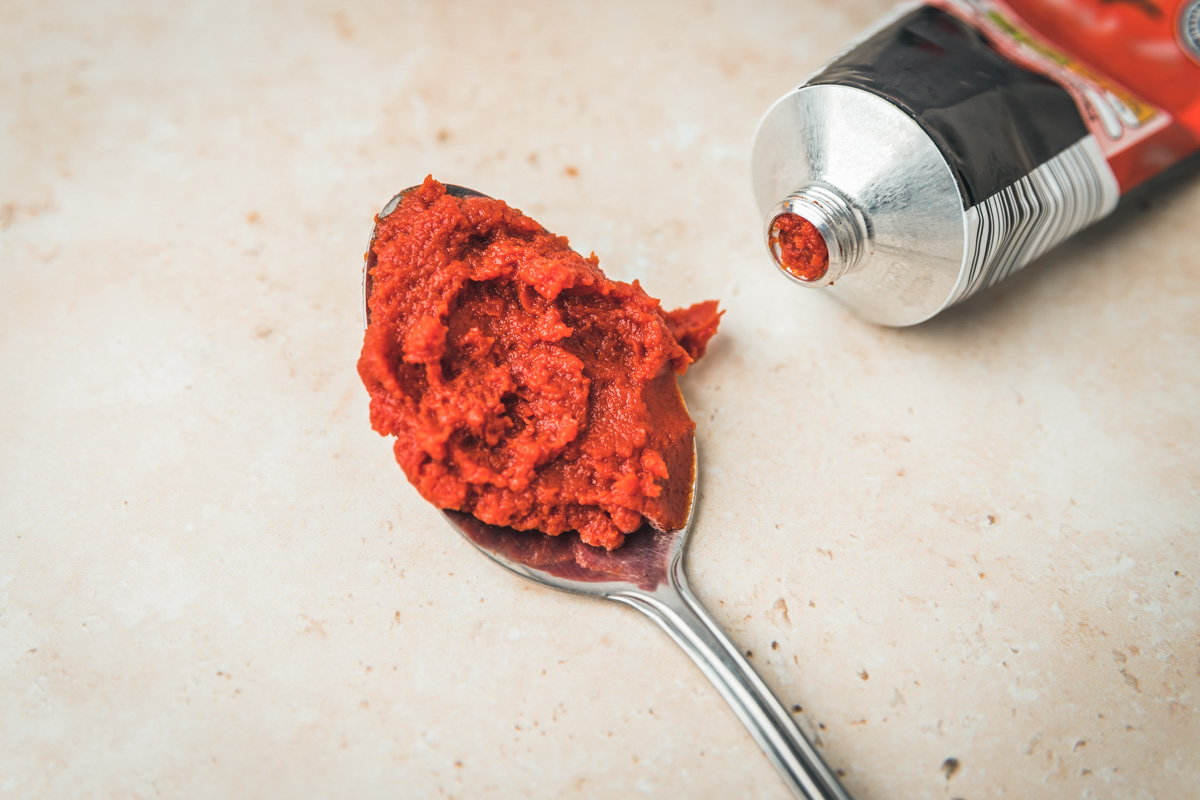
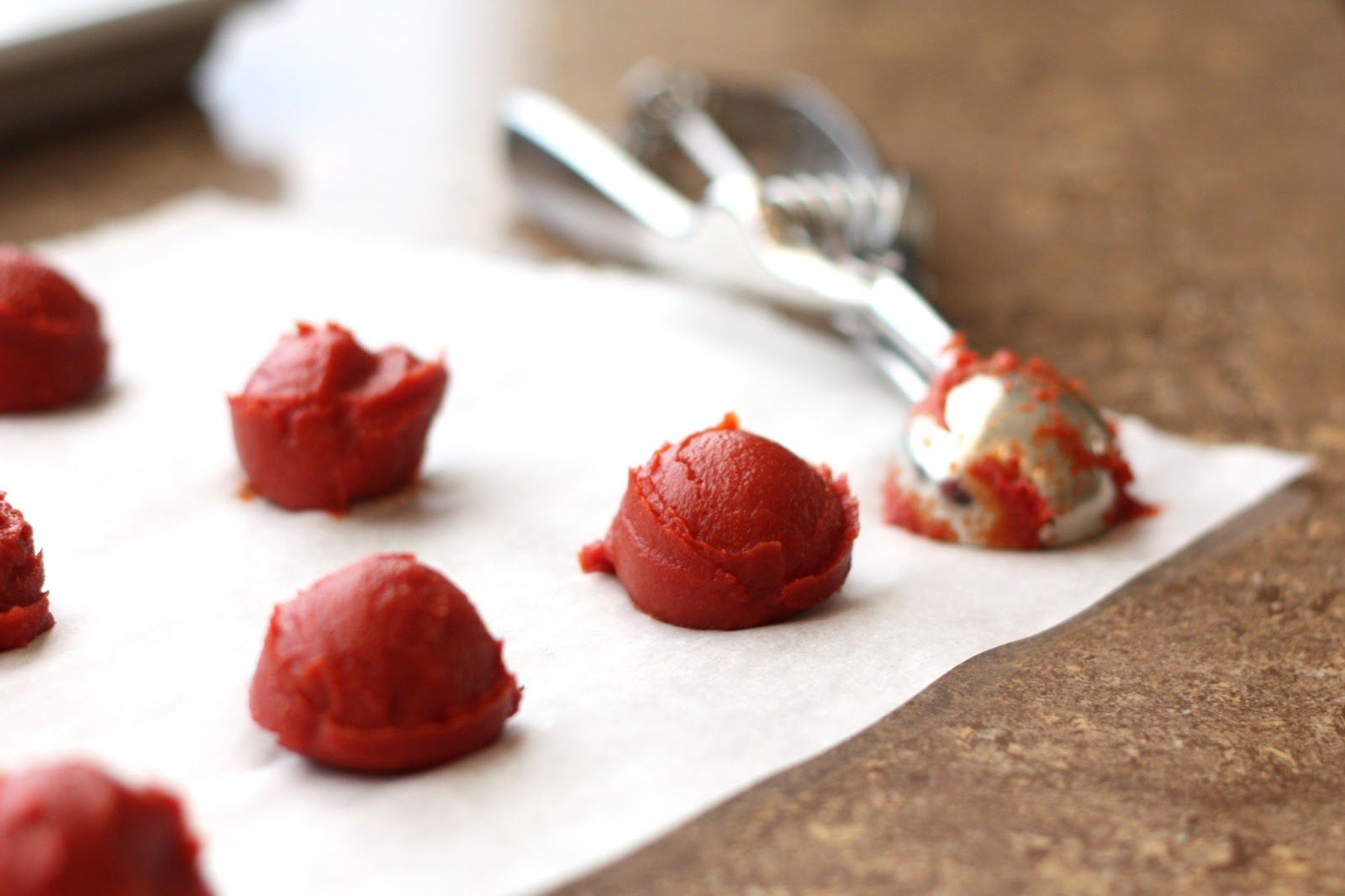
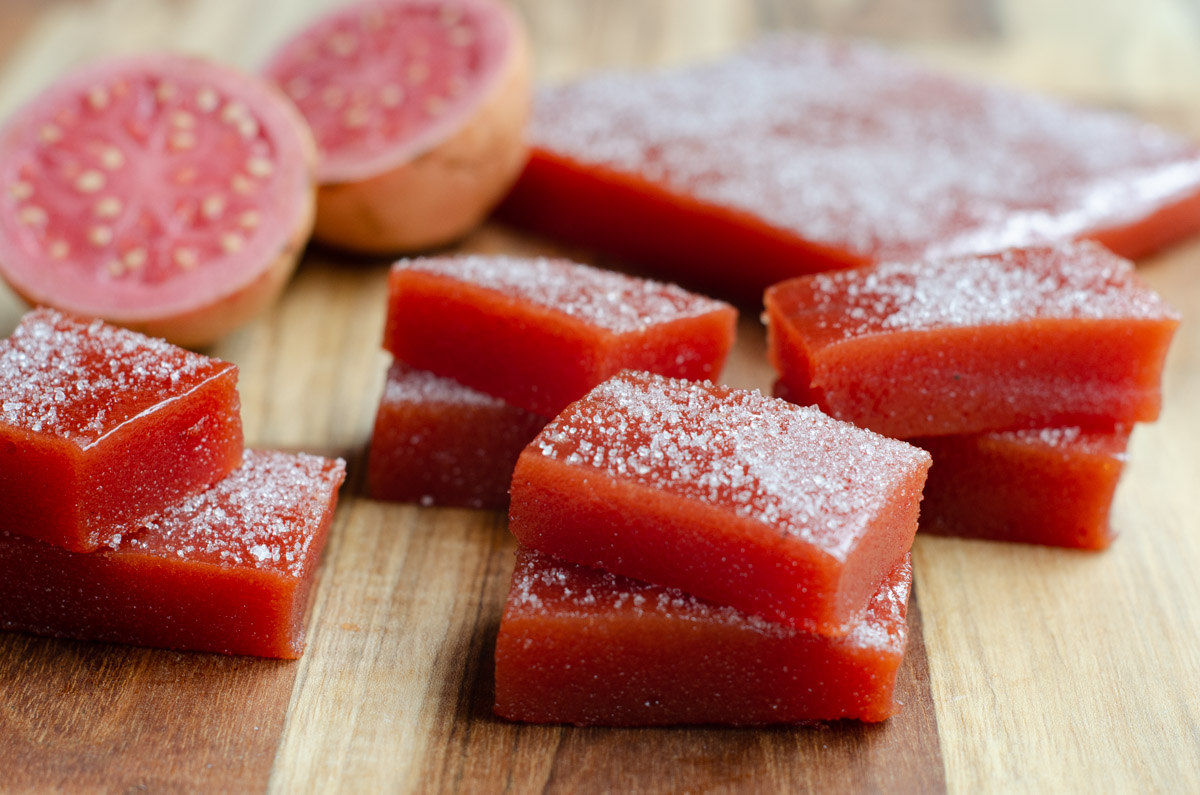
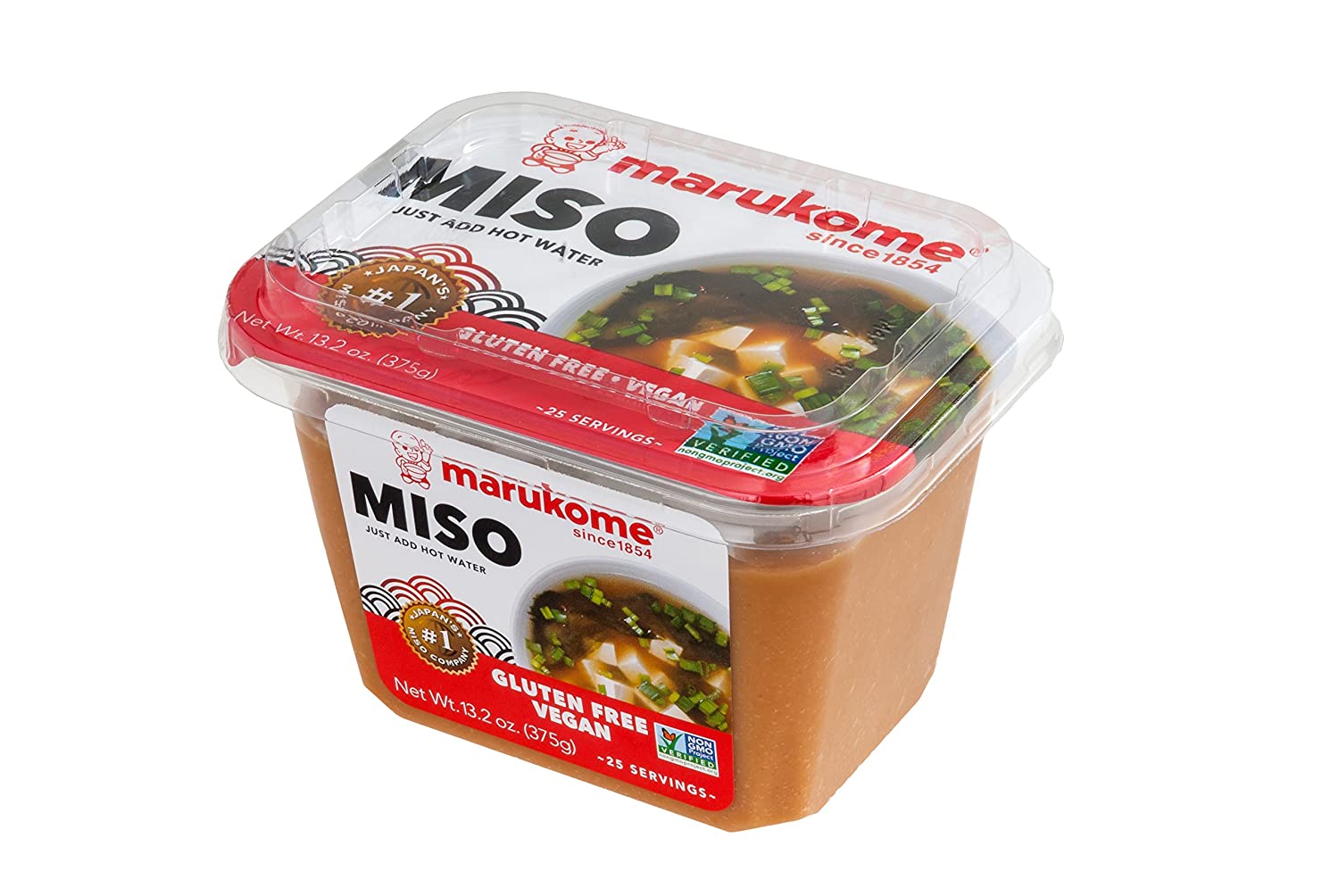


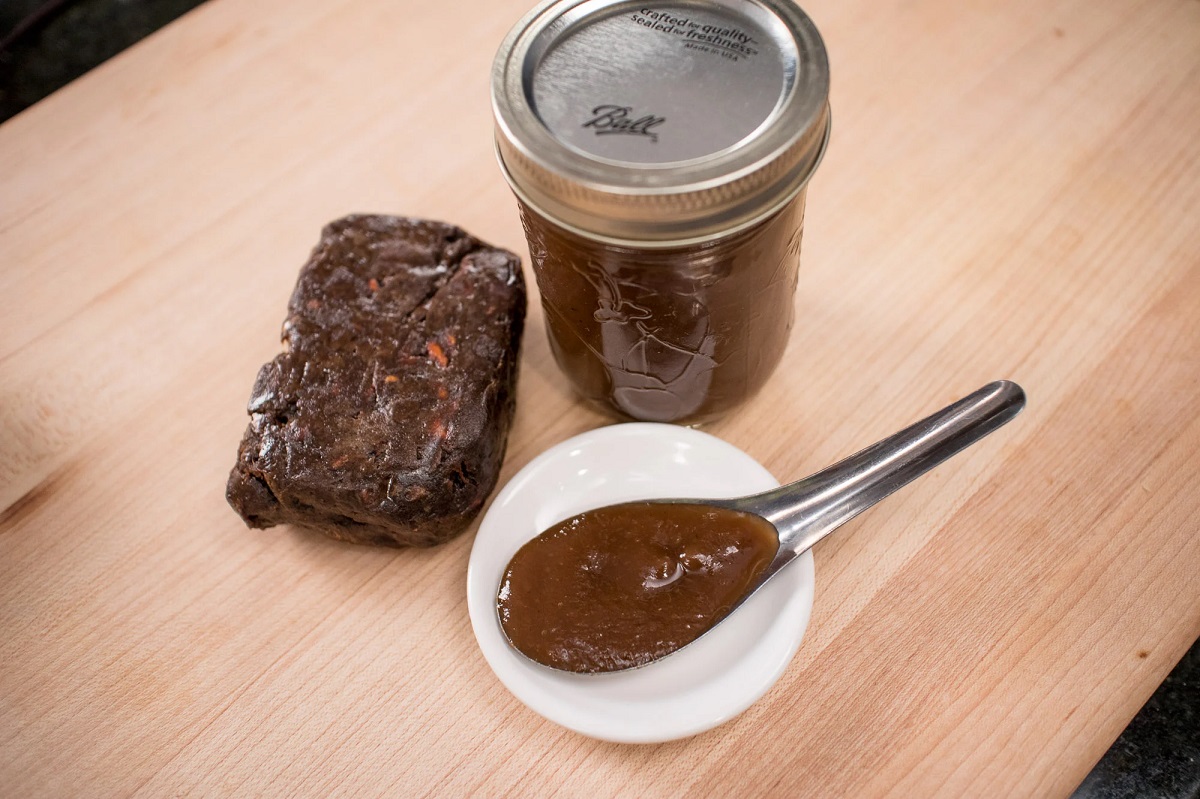
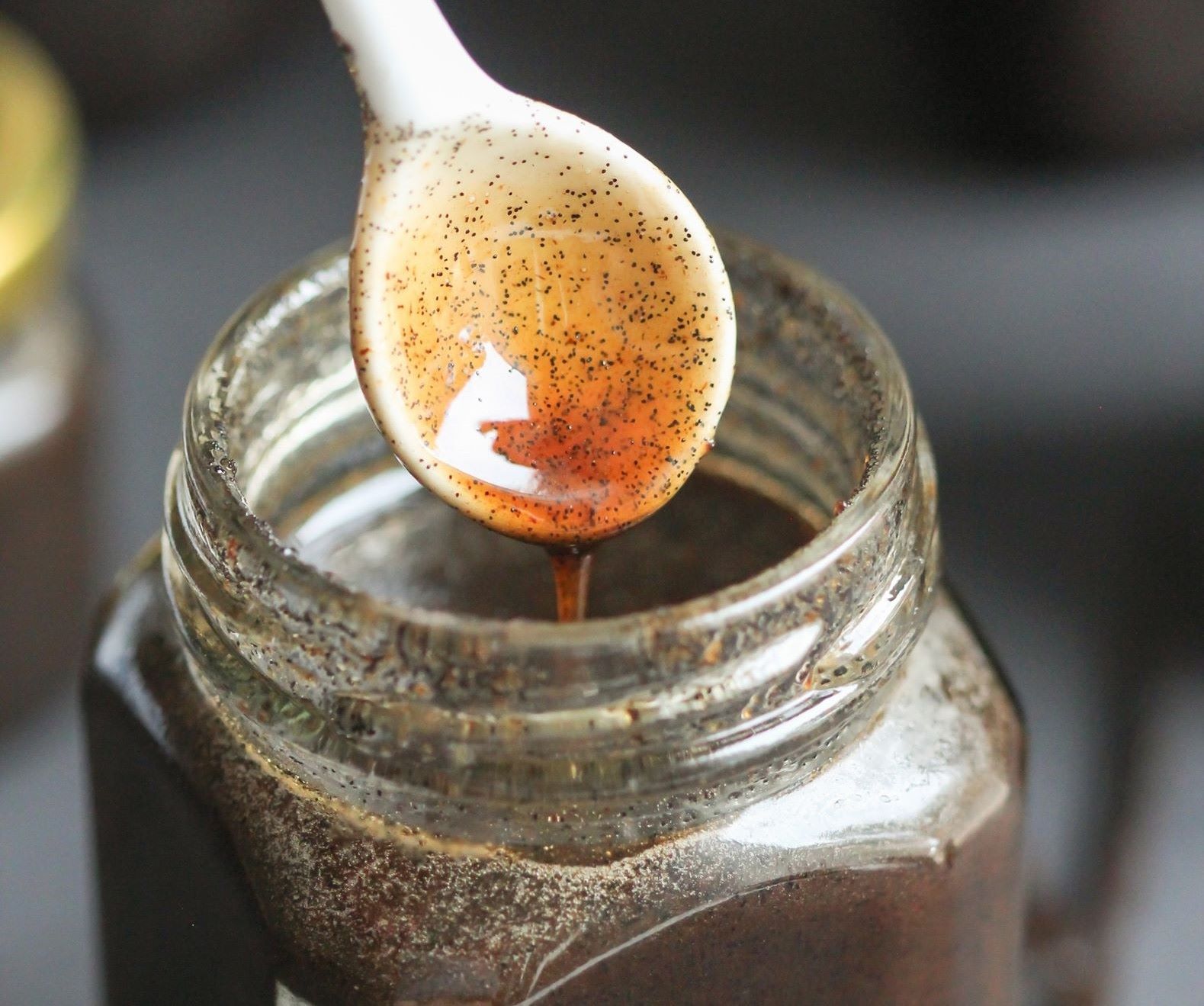







0 thoughts on “How To Store Extra Tomato Paste”